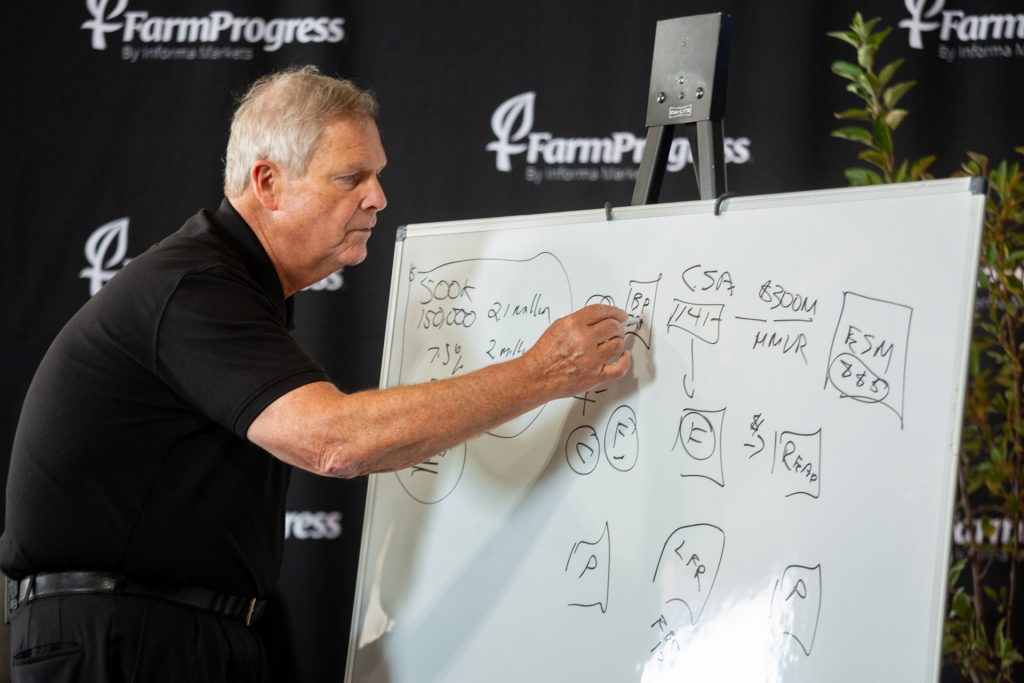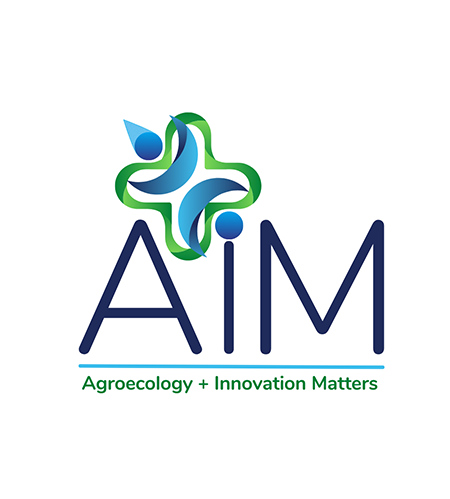Tom Vilsack, the U.S. Secretary of Agriculture, rejects the “get big or get out” approach to farming. Instead, he touts multiple revenue streams as the means for farmers to both increase their income and help spark the diversified agricultural economies needed to rejuvenate small towns.
The USDA secretary made this case on two recent trips to Illinois. In September, he joined President Biden on a visit to a Kankakee farm to promote significant federal resources through his administration’s Investing in America agenda. In August, Vilsack was at the Farm Progress show in Decatur describing the changing climate as a driving force in diversification.
“Climate-smart agriculture can give you a value-added proposition that can increase farm income,” he said, arguing that agroecological practices are among the most effective pathways for small producers to diversify their revenue streams and compete with major food companies.
“So instead of two or three ways to generate profit and income on a farm, we have five or six or seven different ways each farm becomes a center of entrepreneurship,” Vilsack said.
Potential income sources include methane digesters, ecosystem markets, new processing opportunities, conversion of waste products, on-farm generation of renewable energy, and taking advantage of emerging markets for bioproducts.
Vilsack envisions cover crops as an “integral part” of new business models, and expects entrepreneurial farmers to turn these practices into profitable revenue streams “over time.”
Here are some examples of how those efforts are helping to create new revenue sources for farmers in Illinois. USDA has:
- spent $3.1billion for 141 projects — including several that involve Illinois producers — through the Partnerships for Climate-Smart Commodities. The initiatives provide direct benefits to help spark an emerging market opportunity for all of production agriculture — including small-scale farmers in all communities.
- directed $400 million to establish 12 Regional Food Business Centers to help farmers, ranchers, and other food businesses gain access to new markets and navigate federal, state, and local resources. Illinois, Indiana, Michigan, and Wisconsin will participate through the Great Lakes Midwest Regional Food Business Center. It will be housed at Michigan State University Center for Regional Food Systems. Illinois’ conduit for participation will be the Chicago Food Policy Action Council with roll out starting in late spring 2024.
- signed a cooperative agreement with the Illinois Department of Agriculture in partnership with the Illinois Department of Human Services to procure and distribute $14 million in local foods through the Local Food Purchase Assistance Cooperative Agreement. LFPA’s goal is to increase supply chain resiliency through support for local and regional producers.
- awarded the Illinois State Board of Education (ISBE) more than $7.3 million through the Local Food for Schools Cooperative Agreement Program (LFS). ISBE will purchase and distribute locally produced foods to K-12 schools throughout the state. The products will be healthy and unique to their geographic area, with the goal of improving child nutrition and building new relationships between schools and local farmers.
- thus far awarded $200 million to independent businesses through its Meat and Poultry Processing Expansion program. A $6 million grant went to Saline River Farms in southern Illinois. In August, this beef-and-pork processor broke ground on a 60,000-square-foot facility that’s expected to bring 400 new jobs to Williamson County. This $34.5 million infrastructure project includes a $1.5 million grant through the State of Illinois’ Meat & Poultry Supply Chain Capital Grant Program. The $6 million program is administered through the Illinois Department of Commerce and Economic Opportunity.

Story by Bob Heuer—director of HNA Networks, an Evanston-based consultancy that helps organizations navigate the intersection of food, farming, and regional economies.
Photo by Steve Warmowski — communications coordinator for the Agroecology + Innovation Matters initiative after a photojournalism career at newspapers in Illinois and Michigan.
Get stories like this in your mailbox by subscribing to the AIM newsletter.

